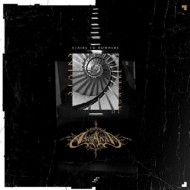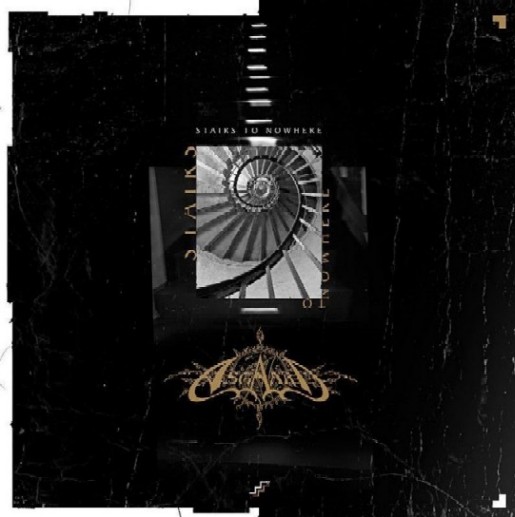 I once watched an interview on a dvd in which Hetzer, guitarist and founder member of Polish band Asgaard, suggested that metal music does not have to be for people of limited intellect. I took this as more of a comment on Asgaard’s music than an observation about the scene in general. Asgaard, who’ve been around since 1994, have always come from the cerebral end of the market, reaching to the stars with their bombastic style of avant-garde music. Sometimes they’ve lost me along the way, while at others, notably on “Ad Sidera, Ad Infinitum” (2000), I have been completely blown away by the rich mix of orchestral forms, theatre and acoustic delicacy. It’s not always been easy going.
I once watched an interview on a dvd in which Hetzer, guitarist and founder member of Polish band Asgaard, suggested that metal music does not have to be for people of limited intellect. I took this as more of a comment on Asgaard’s music than an observation about the scene in general. Asgaard, who’ve been around since 1994, have always come from the cerebral end of the market, reaching to the stars with their bombastic style of avant-garde music. Sometimes they’ve lost me along the way, while at others, notably on “Ad Sidera, Ad Infinitum” (2000), I have been completely blown away by the rich mix of orchestral forms, theatre and acoustic delicacy. It’s not always been easy going.
It’s been eight years since the last release “Eye MDX-stasy”, one of their more accessible works and noteworthy for the gradually rising crescendo throughout the album, culminating in the distinctive spoken voice of Quazarre of Devilish Impressions and Crionics plaintively and darkly warning us of “grey fucking sadness”. The rise and eventual climax of the angst-ridden track “I am the Ecstasy” was and is for me a defining experience in metal. The sleeve of “Stairs to Nowhere” suggests a change of direction from the astral to the dark and shadowy voids of everyday life. The artistry suggests that Hetzer and co have been bathing in intellectual ideas. So it is with the music.
“Enter the labyrinth of madness” is the initial greeting. Perhaps the most fitting description of “Stairs to Nowhere” is that it is multi-dimensional. That’s not to say it can’t be listened to. The music is rich and imaginative but it defies conventional structure. I’d say there is more experimentation and less theatre this time. Is it genius or insanity? That may be the question that the album itself poses. The movement is never ending. Occasionally there’s a pause and we can reflect. I sense that this is about the mood, which is shadowy and Gothic but that’s just some of it. It’s pulled off because, disparate as it all is, Asgaard are top class musicians who have, despite superficial appearances, a strong sense of musical form and without question a fertile imagination. I can only speculate that during the time taken since “Eye MDX-stasy”, layer upon layer of ideas has been added.
This brain-twisting experience begins with “Labyrinth”. It’s unusual for an album to start with a patient drum beat but this is an unusual album. The drums combine with dusky jazz, conjuring up images of smoky rooms at night. Quazarre’s vocals are deliberately off key, creating a nightmarish effect. In the background there’s a chorus of insane-sounding pleas. The synthesiser whistles, while the more conventional guitar gets lost in uncontrollable but not uncontrolled chaos. It doesn’t build up to the nightmare. It starts with it. Where do we go? The answer is deeper into the avant-garde chaos. “Labyrinth” is off-key, mixed up, yet threateningly symphonic. This X-rated horror sounds like nobody. Momentarily there’s a melodic score but it disappears. It’s like a drama or film sound track. Quazarre’s devilishly orientated influence then becomes evident as “Of Pawn and King” starts. “Is there anyone out there?” cries Quazarre agonisingly. We’re in a surreal world looking around us. “The rules have been broken”. This is evidently important. Quazarre’s dark whisperings match the metal anarchy that’s going on here. It blends into a nice acoustic passage which ends the track.
“So here I am ..”. In fact, not knowing where we are is the hallmark of this work. The drift in and out of consciousness continues. A rare techno rhythm matches strident heavy metal. “Listen to the voices”, we are told, on “God of the 3rd Millennium”. The trademark technical work for which Asgaard are known precedes mayhem. “From now on I am your God” – what can it all mean? This is repeated to reinforce the message. A Mediterranean guitar rhythm strikes up to end the track softly in common with “Of Pawn and King”. Such regularity is highly irregular. But fear not. The barmy army continue with theatrical grotesquery and anguished cries before slowing down. We hear irrational laughter, then orchestral sounds blend with confusion and chaos. Manic screams are the prompt for the music to become more frantic. A classical piano piece adds a touch of class. Parameters are being redefined here. I promise henceforth to regard Ephel Duath as normal. “Stairs to Nowhere” makes my brain leak to the point where there is no fluid left.
But it’s far from over. Eastern mysticism prevails as the opera continues. The atmosphere of “Marionettes” becomes threatening. Quazarre mutters darkly. The music proceeds in its quiet and sinister fashion. The human cries suggest a failed escape attempt from the harsh mental torment. The disturbing discomfort gives way to a nice acoustic respite but not for long. The only place it will take you is nowhere in spite of the gargantuan mental efforts being put into this. “There is no light at the end of the tunnel”. As I listened to the title track which followed, the air reminded me of Pink Floyd on some dubious substance. The vocals create a very disturbing dreaminess. Most importantly for the collective work the music is entirely compatible, even though it changes constantly between orchestral, acoustic and metal styles. It’s the irregularity and floating values which make this work interesting. Such are the qualities of the mystical and almost majestic track “Stairs to Nowhere”. “I’m climbing up the stairs to nowhere” seems a logical statement in the context of this surreal work. “Cry of Moribund Butterflies” starts in classical fashion. Jazz piano meets metal and the dark atmospheric shadows and progressions which characterise Asgaard. “Within the Eyes of Angels” initially reminds me of the melodic Gothic band Mely with its somehow hopeful chorus and instrumental interventions. Quazarre speaks from the swamp and hauntingly utters the distant and plaintive cry “take my hand and follow me”. From the sinister background this gives us comfort, yet it is somewhere else. The beat is potent, the style is strongly electronic and heavily progressive. “Their eyes were full of pain” is repeated to press the point home and reinforce the mental torture. The track and album fades out electronically and in typically dark fashion.
“Stairs to Nowhere” is a bold departure from Asgaard’s previous works. It is the merger of suspiciously insane but brilliant minds. It is bizarre, creative and from a world of consciousness and vivid imagination. The more I listen to “Stairs to Nowhere”, the longer it takes me to recover from its intensity and depth. I thoroughly recommend this grandiloquent and highly original work.
(9 / 10 Andrew Doherty)

Leave a Reply